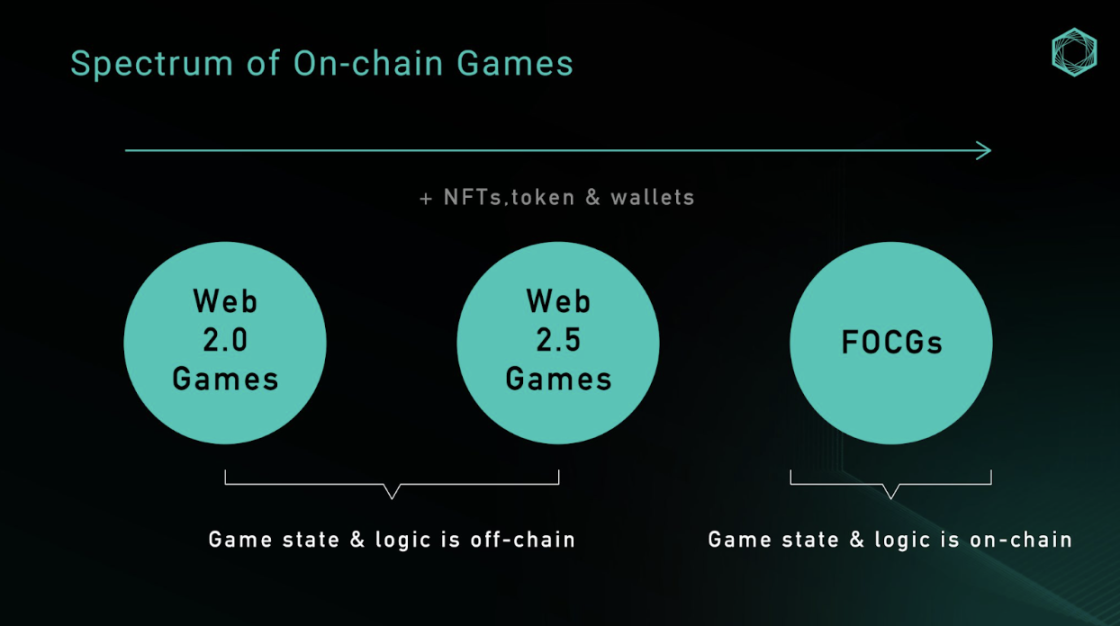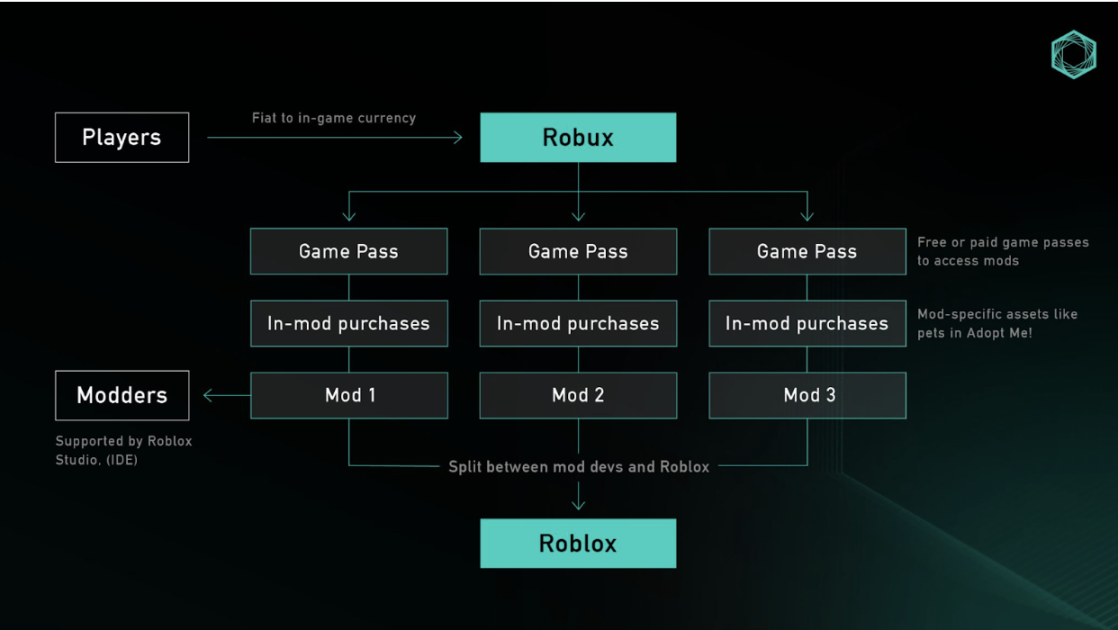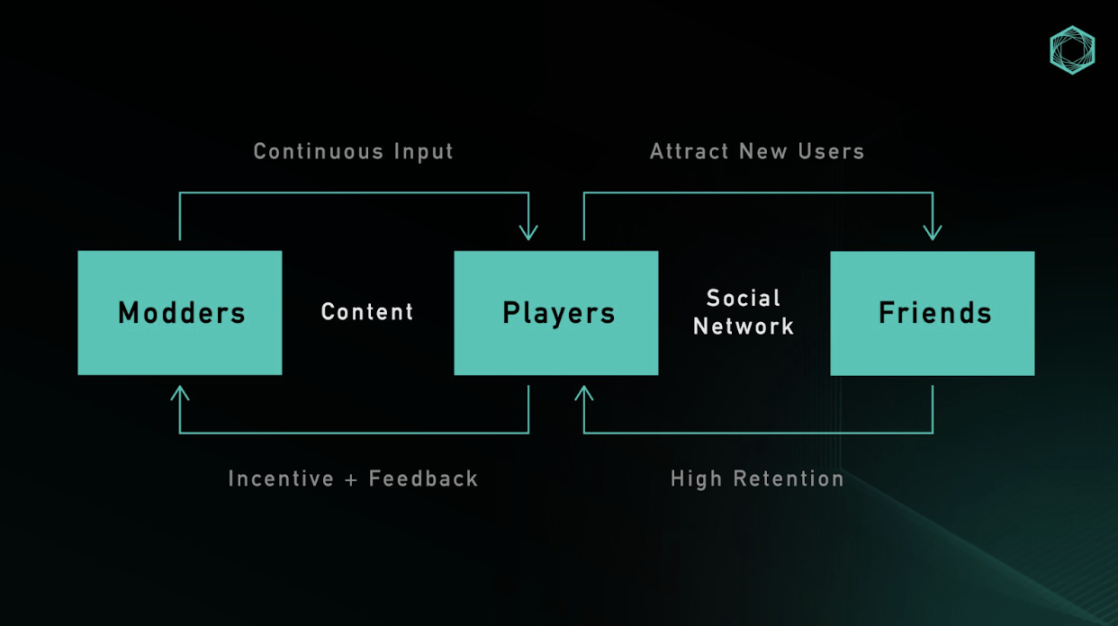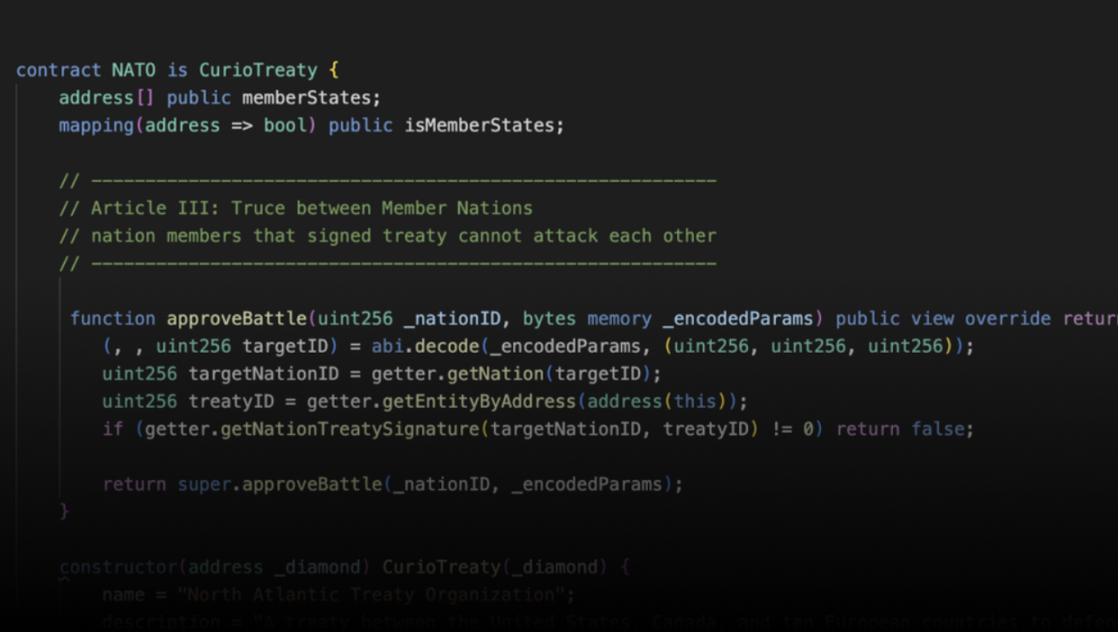Background
To understand the complexity of FOCG, it is necessary to first understand the concepts of game state, game ticks, and tick rate.
Game State
- It is a snapshot that describes all relevant information and data of the current state of the game at any given moment.
- It includes various aspects such as the position and attributes of game objects, player scores, life values, game progress, and other variables defining the current game state.
- The game state is usually updated and modified over time based on player input or other events.
Game Ticks
- Also known as frames or updates, it is a discrete time unit used to measure the progress of the game.
- Each game tick represents an iteration or cycle of the game's main loop, during which game logic and physical calculations take place.
- Each tick usually updates the game state based on current input, processes AI behavior, handles collisions, and performs other necessary calculations to advance the game.
Tick Rate
- It is the frequency at which game ticks occur per second.
- It represents the number of times game logic and rendering are updated and refreshed within one second, usually measured in hertz (Hz) or frames per second (FPS).
- For example, a tick rate of 60 Hz means the game logic updates 60 times per second. A higher tick rate typically results in smoother gameplay and more responsive controls, but it also requires more computational resources.

Web 2.0 Games
In the Web 2.0 game model, all game components including game state, logic, and data are stored off-chain. It is locally managed by centralized servers with powerful computing and networking capabilities to handle real-time gaming and synchronization.
Over the years, efficient game logic coding, hardware advancements, and optimization technologies have made it possible to develop high tick rate games.
Web 2.5 Games
Web 2.5 games represent a more decentralized form of gaming by storing in-game assets on-chain. These games often involve issuing ERC-20 game tokens and tokenizing in-game assets such as skins as NFTs. This addresses the issue of asset ownership in traditional games, as players can fully own and trade these assets on-chain.
However, the operation of game state, game ticks, and tick rate in Web 2.5 games is isomorphic to that of Web 2.0 games. One of the inherent structural and computational limitations of blockchain is the lack of native game ticks. Therefore, computationally intensive components in Web 2.5 games are all processed off-chain.
One issue present in both Web 2.0 and 2.5 games is the lack of transparency and censorship resistance. Game logic such as item rarity, drop rates, and true randomness is often not publicly disclosed and cannot be proven to be fair. Players must trust the claims and decisions made by game developers without independent verification. Additionally, a centralized entity (such as a game studio) has the power to modify, censor, or control the game and retains the ultimate decision-making authority to terminate the game, which can be technically enforced at any time or when necessary.
Full-Chain Games
Full-chain games involve storing the entire game logic, state, and data on-chain. Blockchain is used as a decentralized game server, allowing players to participate and contribute to shared game states without the need for trust.
Non-client-specific full-chain games can be built by multiple front-end operators, all interacting with the same game logic. This approach is similar to the decentralized front-end of Liquity, which can present the same game logic with different aesthetics and user interface elements. Third-party developers can build profitable mods by creating NFT characters or using ERC-20s to interact with the underlying game logic.
By placing game assets, game state, and loops on a trusted neutral blockchain, the transparency and platform risks can be mitigated in full-chain games. This enables on-chain games to safely scale, especially those with high-risk elements.
However, as mentioned earlier, the lack of native game ticks on the blockchain is a significant limitation. All blockchains have block confirmation times, which introduce latency issues. The time required for a transaction to be verified and included in a block can vary from seconds to minutes depending on the blockchain. Therefore, early full-chain games are based on blockchain with asynchronous game elements, such as turn-based collectible card games.
For other game types, such as real-time or near-real-time synchronous strategy games, scaling solutions are required. Here are some examples:
- Argus's World Engine - This is a sharded Layer 2 blockchain SDK with game shards similar to high-performance game servers, specifically designed to handle in-game computations. This is achieved by decoupling game execution (game shards) from smart contract execution (EVM shards). Their first game shard implementation - Cardinal, achieves higher tick rates, with 20 blocks per second, and can be directly integrated with existing game engines such as Unity.
- Curio Research - They have built a custom tick chain implementation on the OP stack (using Caldera as RaaS). This is a high-throughput ECS-based game engine that can support their upcoming real-time strategy game.
- Dojo - This is a "verifiable" game engine built on Starknet, capable of running game sessions off-chain, reducing the need to record every player action on-chain. Instead, proofs can be generated at specific intervals to verify the correctness of previous actions, which are processed off-chain.
Finally, for games with incomplete information, such as those with fog of war, effectively implementing zero-knowledge proofs (e.g., Dark Forest using zk-SNARKs) is also crucial to establish full-chain and ensure fairness.
Commitment of FOCG
Composable Modding
We are currently witnessing a new era in the gaming industry, where players want to personalize, modify, and seamlessly integrate their identities into games, a level of customization that can be achieved through user-generated content (UGC) or modding. The popularity of mods in Web 2.0 games like Minecraft and Roblox exemplifies this trend.

Modding ecosystem in Roblox
In these games, a new category of "players" has emerged: modders, who actively contribute to the growing library and ecosystem of mods. In Roblox, modders can earn revenue from their content through game passes and/or in-game purchases in the form of Robux. The returns from building and operating successful mods can rival those of independently developing games. Independent studio Uplift Games, represented by Adopt Me!, employs approximately 40 people annually and generates $60 million in revenue.

Roblox flywheel
This dynamic creates a self-reinforcing positive feedback loop with significant network effects. As modders continue to create new games and content, players become more immersed, and new users are attracted through social networks. As the player base expands, the incentives and feedback systems for mods encourage more players to become modders. The symbiotic relationship between modders and players, along with intuitive development tools, has driven the rise of unique virtual worlds, experiences, and communities within individual games.
However, mods in traditional games often exist in isolation, lacking a universal framework for meaningful interaction. While this may be intentional, new input and contributions from modders often remain confined to isolated virtual worlds. Even when cross-mod interactions occur, the impact on gameplay is often negligible, such as using the same appearance across different mods (referred to as "allowed gear" in Roblox).
The potential of composable modding is a key value proposition of FOCG. Upcoming FOCG projects take various approaches to build their technical stack, but a common approach is to allow third-party developers to interact directly with game logic through smart contracts, enabling them to:
- Create new mods (with mod-specific token economies)
- Expand the functionality of games and mods by adding new items, characters, and maps

Composable Modding Ecosystem on-chain
It can be envisioned that if Mod A community introduces a new resource, it should be directly compatible with the world of Mod B, allowing players there to plant, harvest, and trade that resource.
This incentivizes modders to consider not only individual mods but also all related mods when designing new features. Composable modding extends the potential for earning and spreading best practices. However, to achieve this composable modding on-chain and ensure a consistent gaming experience, modders may need to operate within a limited design space compared to traditional games.
Smart Contracts as Social Contracts
In traditional games, players, teams, and guilds rely on informal and non-executable agreements for interactions beyond the predefined game mechanics. This approach has some limitations, especially in high-risk games, where violating agreements can have significant consequences.
In 2014, a large-scale battle called the "Battle of B-R5RB" took place, involving thousands of Eve Online players. Before the battle, informal agreements and treaties were reached between alliances to collectively combat a common enemy. However, during the battle, one alliance unexpectedly betrayed its allies, violating the agreement and resulting in game asset losses exceeding $300,000.
The treaties explored by Curio Research highlight the enormous potential of smart contracts in facilitating complex social interactions between players or teams. Game-specific smart contracts like Treaties can formalize agreements between players and execute them in a trustless manner when predefined conditions are met.

CurioTreaty
"Treaty has many implications. It can be a treaty similar to NATO, where after joining and paying dues, you are forbidden from attacking other committee members. It can be a national bank issuing tokens backed by USDC, forcing treaty signatories to strictly use your national currency in the next in-game AMM exchange with the treaty partner." - Kevin Z, Curio
The customizability and modularity of these in-game smart contracts can extend social dynamics beyond the game and allow direct interaction with other on-chain ecosystems, such as DeFi protocols.
Barriers of FOCG
Undoubtedly, FOCG has the potential to innovate on-chain modding patterns and social interactions. However, as we closely examine these commitments, a series of issues emerge.
Technical Limitations
In addition to the lack of native on-chain game ticks, various technical limitations need to be considered:
- High gas costs and low TPS - Bottlenecks on most mainnet chains make supporting synchronous gaming and concurrent game sessions/instances challenging.
- Vulnerability of on-chain randomness - Validators can see the results of randomness before it is confirmed on-chain, leaving room for manipulation (requires VRF/ZKP solutions).
- Machine cheating - Decentralized game entities have limited means to regulate and enforce anti-cheating measures. Bots can interact with the game like human players without inherent restrictions.
- Non-intuitive user interface and user experience for Web 2 game players - Using dApps typically requires creating wallets, signing transactions, bridging assets, etc. It is important to simplify this process (i.e., abstracting wallet accounts) to maximize the onboarding of non-crypto-native game players.
- Security - When FOCG involves assets with real value that can interact with DeFi, exploiting vulnerabilities becomes irreversible and could have a permanent impact on the entire FOCG ecosystem.
2. Composability Costs
The promise of composable modding introduces certain trade-offs, especially when considering that on-chain implementation may hinder the factors that would ideally make modding successful.
For Players
Successful Roblox mods like Jailbreak, Arsenal, and Adopt Me! have amassed large followings, with total visits exceeding 40 billion. Each mod offers unique gameplay mechanics, rules, environments, and in-game assets:
- Jailbreak immerses players in a plot of escape and police pursuit.
- Arsenal provides an FPS experience similar to "Call of Duty."
- Adopt Me! revolves around adopting and caring for virtual pets.
From a player's perspective, the appeal of these mods lies primarily in their unique gameplay mechanics, storytelling, and thematic elements. Players can compare playing Roblox to logging into Steam, as both offer a diverse range of game types and experiences for players to explore.
The community has attempted to make mods more interactive, such as in the "Pixelmon Modpack," where a pre-configured set of Minecraft mods can be downloaded. However, these mods still remain isolated from other modpacks and run on local servers. However, the current demand from players for such interactive mods seems to be low, and the lack of an official framework in the main modding ecosystem reflects this.
For Modders
Physics and Game Balance
In an unpermissioned modding ecosystem, achieving composability requires careful consideration of game physics and balance, crucial for ensuring a fair and enjoyable gaming experience.
In traditional games, modders can freely modify game physics according to their desired game mechanics, as their created mods do not necessarily need to interact with other mods. For example, in the game world of Roblox, there are some basic physical principles, but each mod can flexibly define and implement its own physical rules. Jailbreak has specific physics rules related to vehicle control and collisions, while Adopt Me! has a unique physics system related to pet movement. It is because of this flexibility that Roblox can attract and accommodate modders with expertise in various types, such as FPS, horror, and casual games.
To truly make mods composable, consistent game physics need to be maintained across all mods. Considering game balance when new items, economies, and systems are added to the game without permission will bring additional inflexibility. For example, FOCG needs precise calculations and framework designs to prevent new characters or strategies from becoming too powerful. Additionally, coordinating new inputs across the entire tech stack (including front-end and related contracts) requires complex coordination.
One can imagine that fully composable modules would cause chaos in this regard and would restrict new inputs to merely aesthetic changes rather than allowing inputs that affect game outcomes. Such consistency may hinder the diversity of modders and lead to homogenization of the modding ecosystem.
A permissioned modding ecosystem could mitigate some of these issues, but it would contradict the fundamental principles of autonomous worlds that FOCG should adhere to.
Specific Types of Game Logic and Infrastructure
Different types of games require different refresh rates, making it impossible to build new mods for types of games that rely on higher refresh rates than the FOCG infrastructure currently supports.
Therefore, most upcoming FOCG projects will focus on initially building infrastructure for specific games to meet their scale requirements before attempting to make them more universal.
There is a clear pattern among these teams - almost all of them are focused on building infrastructure to support strategy games (such as Dark Forest, Treaties, Primodium, etc.). On one hand, strategy types are relatively easy to implement and can fully benefit from the fully on-chain features, such as Treaties. On the other hand, a specific type of tech stack may limit the diversity of players and modders, thus reducing the full potential of composable modding.
Should Games Be Fully On-Chain?
In an ideal scenario, FOCG's value propositions, such as composable modding, are valuable for both players and modders, and traditional game studios can incorporate these elements into their off-chain or hybrid systems to benefit from them without being constrained by design space limitations.
For example, turning in-game assets into NFTs and implementing executable social contracts combined with smart contracts. Meanwhile, the rest of the components can run off-chain, including a modding ecosystem redesigned through an appropriate framework to ensure composability.
Reasons for FOCG
While this scenario is indeed possible, I remain open-minded and believe that FOCG may surpass these hybrid games in specific areas. I believe the most competitive case for FOCG is high-risk games driven by player communities, which demand not only in-game assets and credentials but also the entire game logic to be on-chain.
To illustrate this point, consider the closure of Marvel Heroes. It was a free-to-play online action role-playing game featuring characters from the Marvel Universe. In November 2017, the game suddenly announced its closure, triggering a wave of demands for refunds. However, due to clever legal technicalities, consumers found themselves with no explicit compensation rights and no access to purchased in-game assets.
"You agree that Gazillion and any affiliates, licensors, agents, or employees are not liable to you or any third party for any liability, whether due to system revisions, supplements, suspensions, or cessation of use, or due to any termination of the license. Gazillion has the right to, at its discretion, delete or clear any of your content when that content exceeds the designated time limit and/or quantity, or when the system or any of its components requires maintenance or upgrade." @GIBiz
Simply putting assets on-chain does not fully solve the problem of game studios maliciously exiting, as game states and progress would still be lost, rendering these assets useless in-game. Additionally, in this scenario, the studio is not obligated to open-source the game. FOCG can address this issue.
Provable fairness can be related to game mechanics and outcomes within the game. Imagine a group of players participating in a battle against a common enemy, where the highest damage dealer has a chance to receive a high-value item drop. Or imagine a 4X real-time strategy game where the randomness of spawn locations and resource proximity is crucial.
In these scenarios, FOCG can ensure that the outcome of battles or randomness is provably fair. This trustless environment not only benefits players but can also extend to new forms of "players," including speculators betting on game outcomes through smart contracts. Ensuring unmanipulated game outcomes and permanence (as game states and logic can be forked) will enable high-risk game ecosystems to truly expand without any platform risk.
I believe there are other elements that need further exploration and coordination. I look forward to seeing:
- Further exploration of true randomness that cannot be tampered with by miners, oracle operators, or other players. Any possibility of front-running trades or observing results before they are confirmed on-chain needs to be mitigated.
- Practicality of on-chain randomness. If not feasible, there is a need to accelerate and expand off-chain randomness solutions.
- Architectural optimizations to better support concurrent game sessions/instances without sacrificing composability.
- Game mechanics and social dynamics that can directly interact with adjacent on-chain ecosystems. High-risk FOCG internal or derivative economic systems would greatly benefit from composability with DeFi functionalities.
- Better alignment of incentives for players and modders. As the boundaries between developers and players become increasingly blurred, new business models may emerge, similar to the widespread use of free-to-play models in mobile games.
- Decentralized game balance governance structures to accommodate unpermissioned modding.
I am hopeful that games built entirely on-chain can create new primitives, thus realizing a new paradigm for gaming, fully leveraging all the advantages that blockchain offers, not just some of them.
Acknowledgments
Thanks to Erik Lie, Richard Yuen, Jonathan Yuen, Adrian Chow, and Harry Lam for their assistance. Special thanks to my brother Nathan, a Roblox enthusiast, who answered all my game-related questions.
References
https://blog.chain.link/blockchain-gaming/
https://blog.zkga.me/announcing-darkforest
https://book.dojoengine.org/index.html
https://blog.argus.gg/world-engine/
https://blog.curio.gg/introducing-treaty/
https://blog.curio.gg/how-we-built-this-treaty-technical-overview/
https://www.paradigm.xyz/2023/08/onchain-games
https://daposto.medium.com/game-networking-2-time-tick-clock-synchronisation-9a0e76101fe5
https://daposto.medium.com/game-networking-3-rtt-ping-latency-lag-679b73b274ae
https://www.youtube.com/watch?v=8TEtOpwO0LY
https://www.youtube.com/watch?v=z7V830zndoA
https://www.gamesindustry.biz/gazillion-entertainment-has-officially-shut-down
免责声明:本文章仅代表作者个人观点,不代表本平台的立场和观点。本文章仅供信息分享,不构成对任何人的任何投资建议。用户与作者之间的任何争议,与本平台无关。如网页中刊载的文章或图片涉及侵权,请提供相关的权利证明和身份证明发送邮件到support@aicoin.com,本平台相关工作人员将会进行核查。




